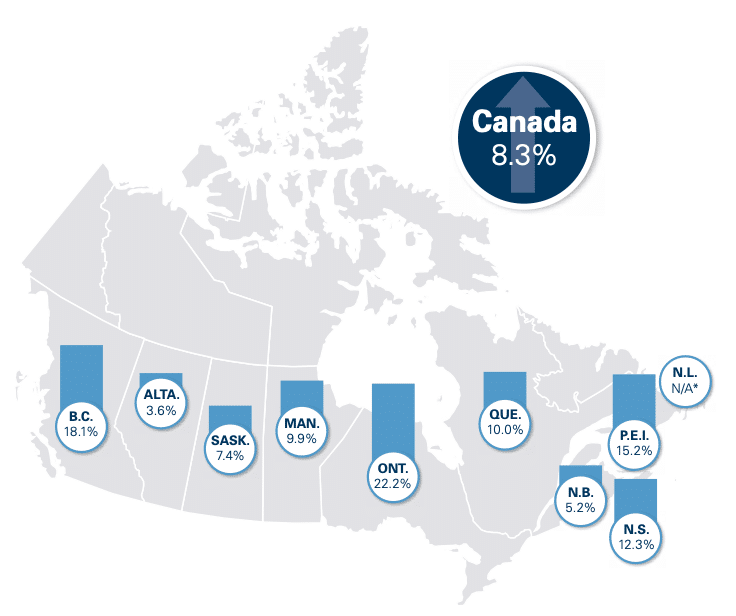The price of farmland in Alberta increased modestly in 2021 at 3.6 per cent, below the national average of 8.3 per cent, the 2021 Farmland Values Report from Farm Credit Canada (FCC) says. This was down from 2020’s six per cent increase.
The largest increase was recorded in the southern region at 6.2 per cent for both dry and irrigated land. The drought didn’t influence farmland prices as it was partially offset by high commodity prices.
Regional increases:
- Peace — 3.6 per cent
- Norther — 1.5 per cent
- Central — 3.5 per cent
- Southern — 6.2 per cent
- Southern (irrigated) — 10.7 per cent
Looking nationally, Ontario recorded the largest jump in price at 22.2 per cent. British Columbia followed behind at 18.1 per cent, Prince Edward Island at 15.2 per cent, Nova Scotia at 12.3 per cent and Quebec at 10 per cent.
“The low interest rate environment and favourable commodity prices seem to have offset some of the many challenges that could have been expected to restrain the demand for farmland and the price producers are willing to pay for land,” J.P. Gervais, FCC’s chief economist, says in a news release about the report.
Other provinces showed more moderate increases, ranging from Alberta at 3.6 per cent to Manitoba at 9.9 per cent. Saskatchewan recorded an average increase of 7.4 per cent, while New Brunswick had a 5.2 per cent average increase, the report says.
Once again there was insufficient number of publicly reported sales in Newfoundland and Labrador, Yukon, Northwest Territories and Nunavut.
There’s uncertainty, with labour shortages, supply chain disruptions, geopolitical tensions, farm input inflation and incremental interest rate increases expected for 2022, Gervais notes. However, FCC is forecasting grain receipts will increase in 2022, fuelled by strong demand and tight global supply.
The report notes increases in farmland values across the country are as wide and varied as the factors that may have influenced them. Average farmland values have increased every year since 1993, however, increases were more pronounced from 2011 to 2015 in many different regions.
Land markets in Prairie provinces were somewhat tempered by adverse growing conditions, while farmland values in several regions of B.C. were supported by limited supplies of available land and proximity to urban areas, the report says.
Related Articles
Production Challenges Abound in 2022 for Alberta Farmers
Strong Commodity Prices, Low Interest Rates Support Farmland Values





